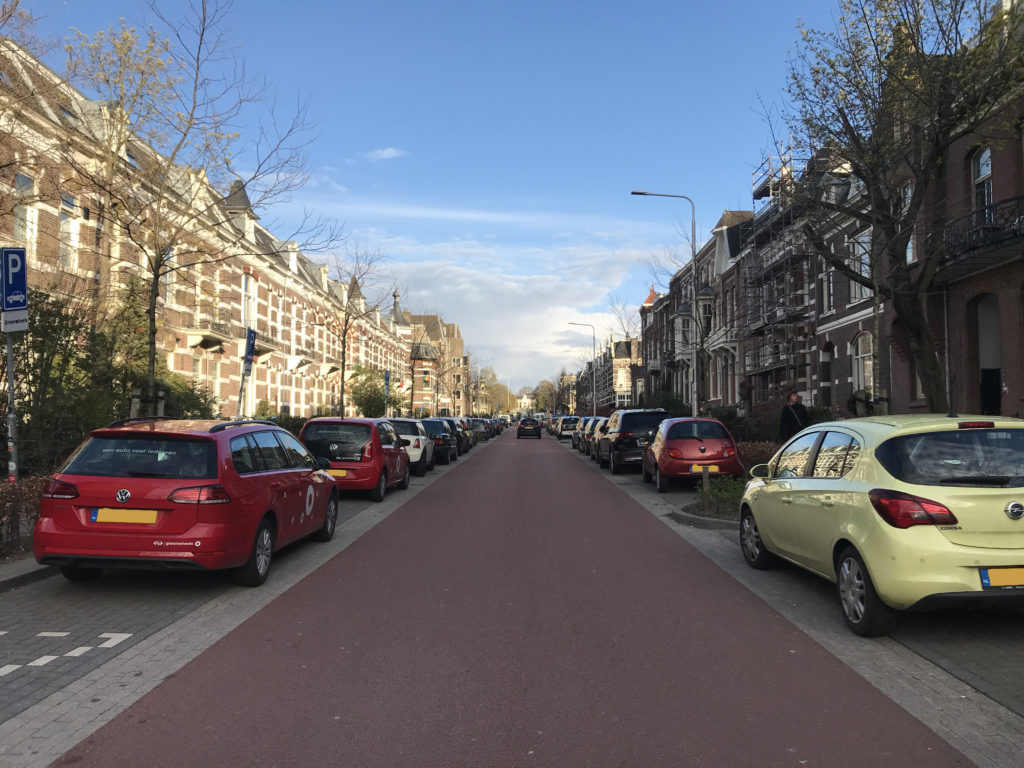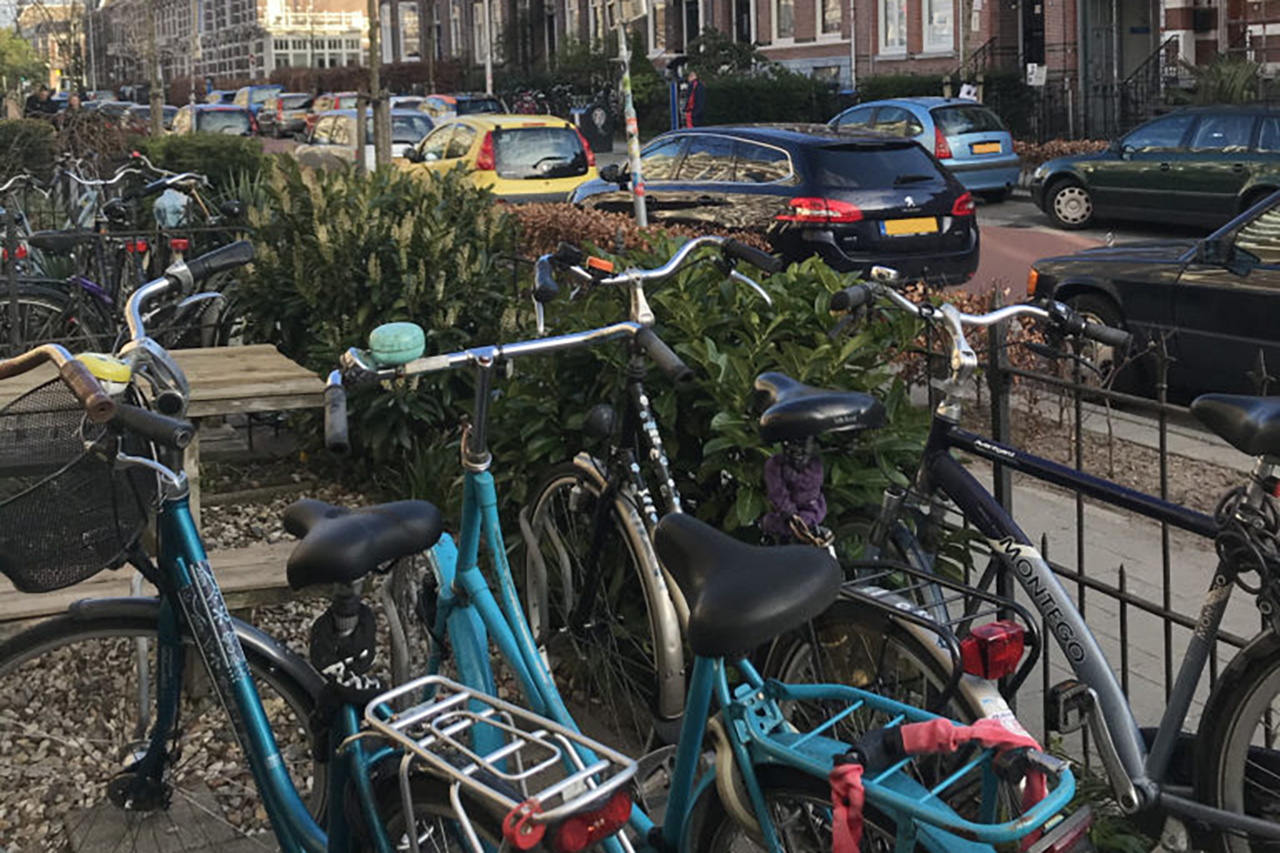Innovation / Sustainability
The elements of the Mobility Donut: Excessive Mobility
I live a stone’s throw away from Nijmegen railway station and happily make regular use of the reliable rail services provided by the Nederlands Spoorwegen (the Dutch National Rail Service or NS). I do not need my own car. My bicycle takes me nearly everywhere i need to go, and otherwise I take the train or rent an Amber shared car. My travel options in Nijmegen are more than sufficient.

On more than one occasion, I have looked down my street and wondered why there are so many parked cars, especially when, like me, all my neighbours live so close to Nijmegen’s largest public transport hub as well as many great cycling routes. The cars take up space that could be used for trees and other plants, or for our bicycles that fill many front yards and sidewalks so much so that we trip over them. The mobility claim on space must change, but when will we dare to start talking about it?

The World of Tomorrow
As mobility consultants, we are looking ahead to the world of tomorrow. Many people seem to think – often unconsciously – that the future must be able to provide more, be more daring and go further. This is also how policy development has functioned in recent decades. Based on complex models, we calculate where we are going to invest. Within public transport, the heavy transport flows, where large groups of people can be transported from A to B at low cost, are often given priority. This is certainly efficient in terms of cost-benefit analysis.
At the same time, the National Market and Capacity Analysis (NMCA), which is used to make money available from the Dutch National Infrastructure Fund, also focuses mainly on combating infrastructural capacity problems and bottlenecks. The magic words there are traffic flow and solving bottlenecks in the road network. For years, we have been actively working on extending the possibilities of those who are already on the road. The result is that we are travelling ever greater distances because the asphalt stretches ever further and wider in front of us.
It’s a question of investment priorities
The question is whether we should want to go further and further. In my opinion, this approach is reaching its limits. First and foremost because we are running out of space, but also because we have to be mindful of our environment and our own health. In addition, the gap between those who can travel and those who experience mobility poverty is widening. Cuts are made to bus routes in rural areas, resulting in bus stops that are further away for travellers and therefore creates an increase in car dependence. Due to the loss of ridership, we are forced to set up expensive systems in order to keep offering public transport as an attractive option. At the same time, government investments are flowing into projects such as much-lamented motorway extensions. You might ask yourself for whom we are doing it, because the bus traveller from the local village who can no longer take public transport will become just another motorist ‘stuck in traffic’ on that new motorway during rush hour.
Excessive Mobility
Creating more space for mobility cannot be infinite because there are limits to growth. Mobility need not be infinite, though, if we organise our space strategically, organise ourselves flexibly as the corona crisis has taught us, and make greener travel choices. Last week, Otto wrote about mobility poverty, and we believe that to properly discuss mobility poverty, we need to be honest about the limits to mobility growth: we call this Excessive Mobility. If I were to remove all excess mobility from my neighbourhood, for example, I would see a wider and empty sidewalk that is more accessible to less mobile people or parents with prams. I would see more space for trees, plants and flowers. And, of course, more space to store our bicycles so that our front gardens can be used as places to meet and spend time. The street would come alive, and wouldn’t that be a wonderful thing?
This blog is part of a series of four entries focused on the Mobility Donut. Each week, we will explain an element as experienced through our work and the mobility experience in the Netherlands. We developed this concept based on the ideas presented in Doughnut Economics, created by economist Kate Raworth. The Mobility Donut links mobility poverty, basic mobility, mobility happiness and excessive mobility. We are currently developing the Mobility Donut Game to help our clients find the balance in mobility policy. Interested? Please contact Babet Hendriks.


 ">
">